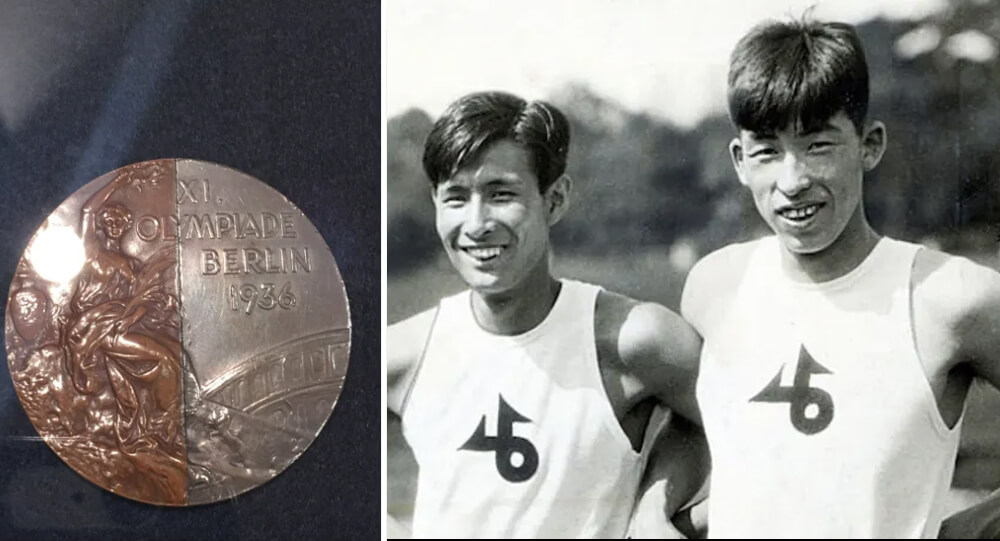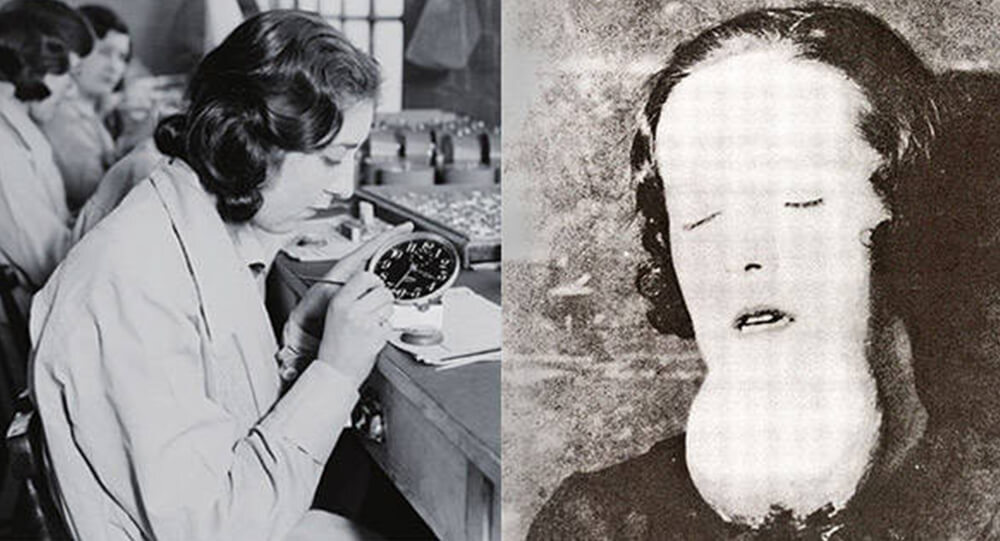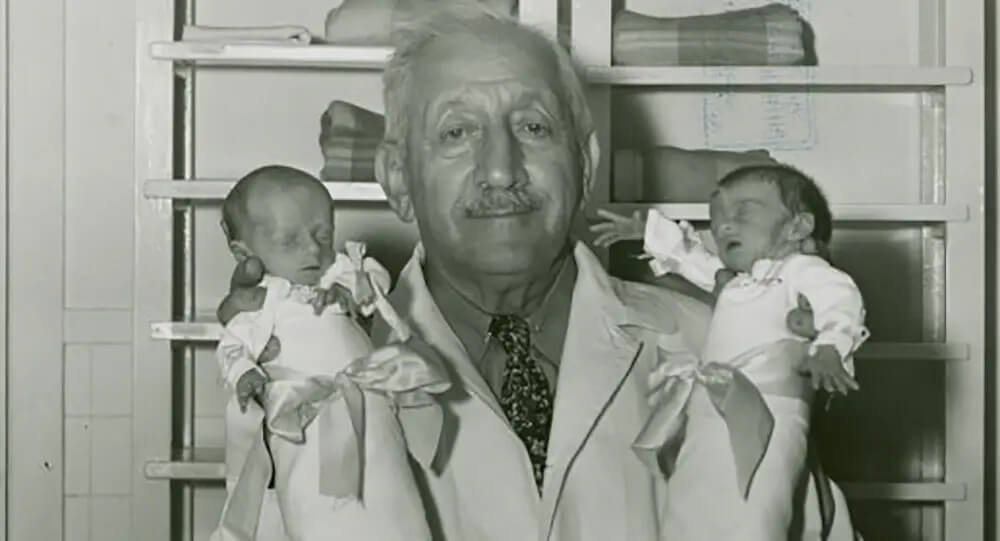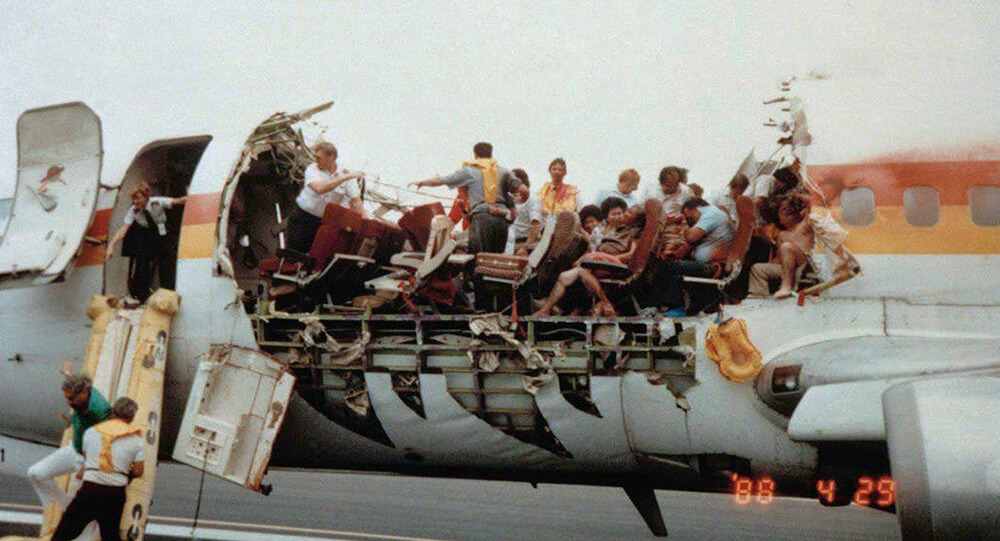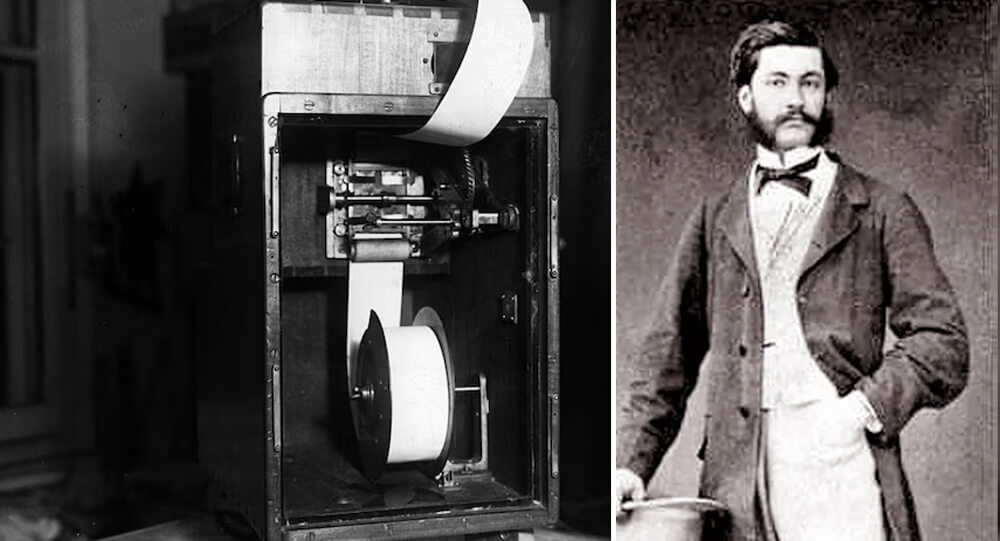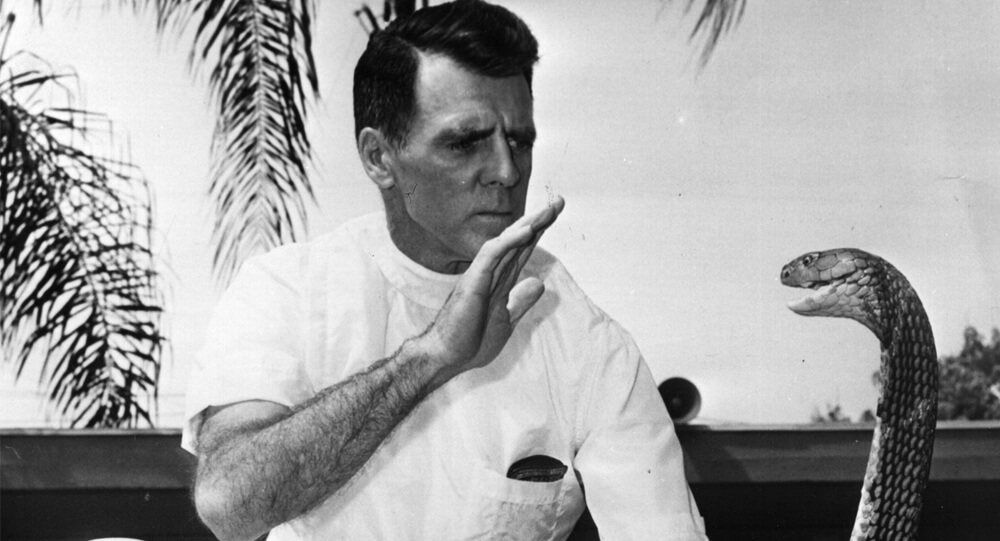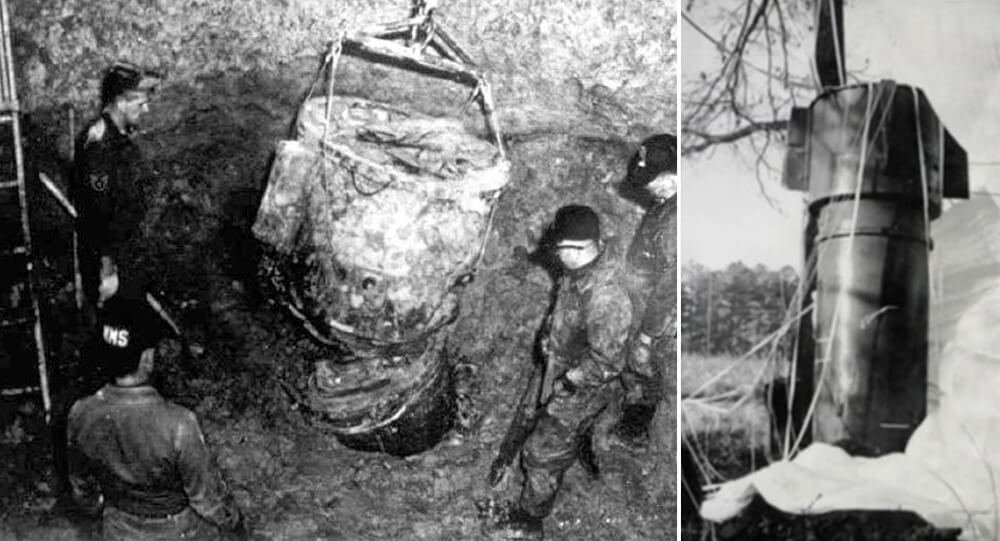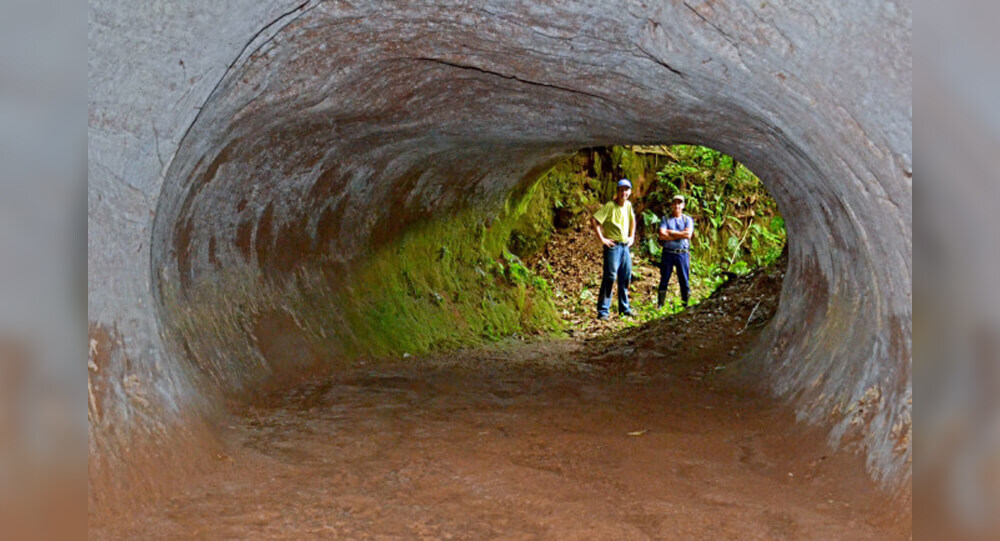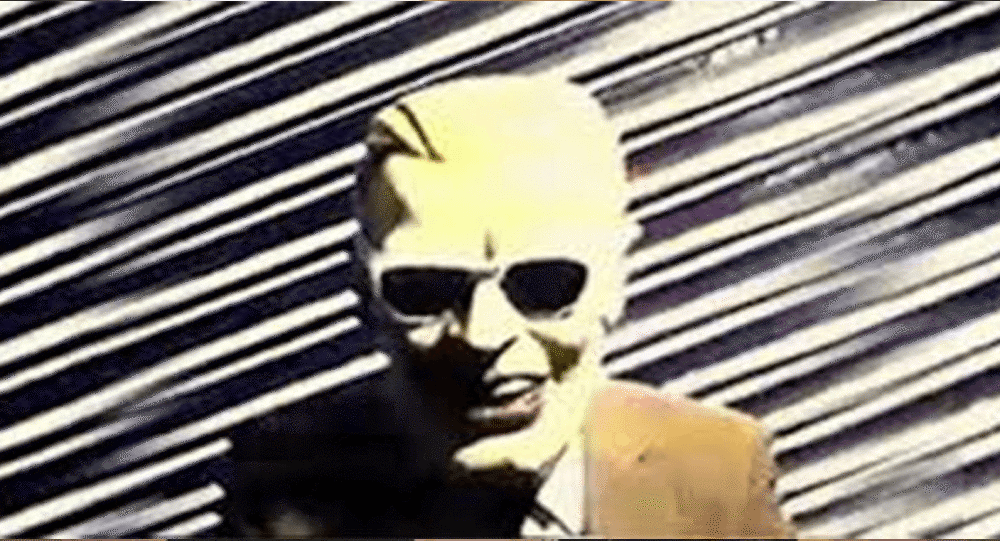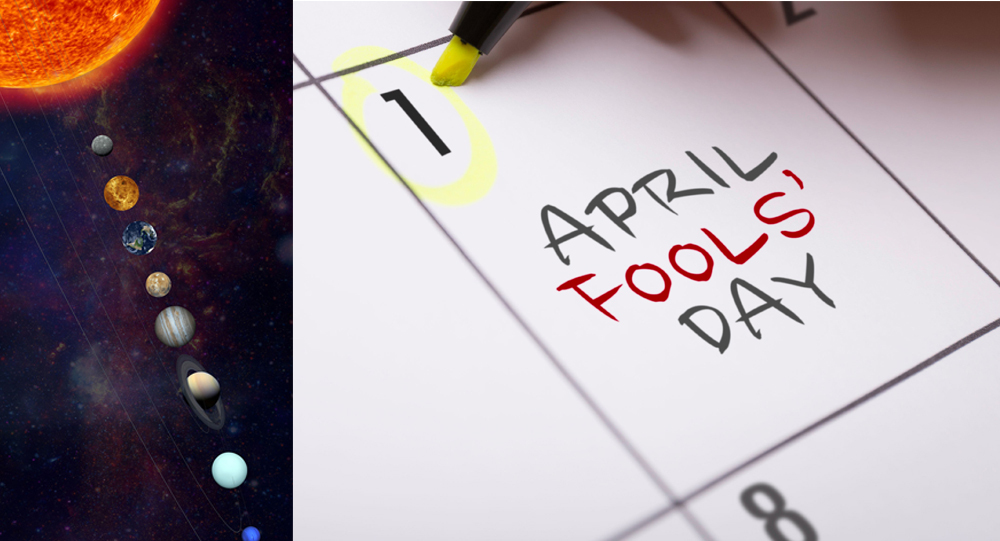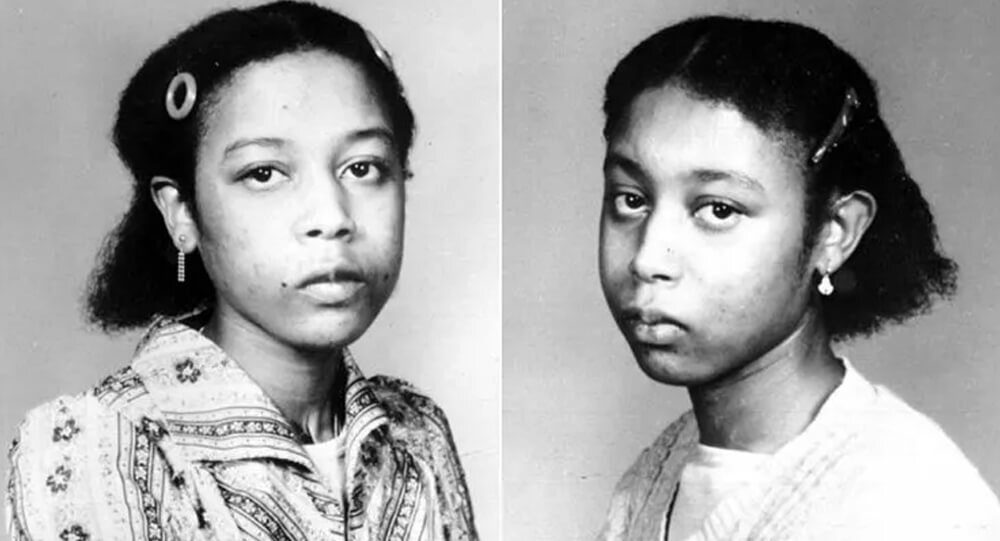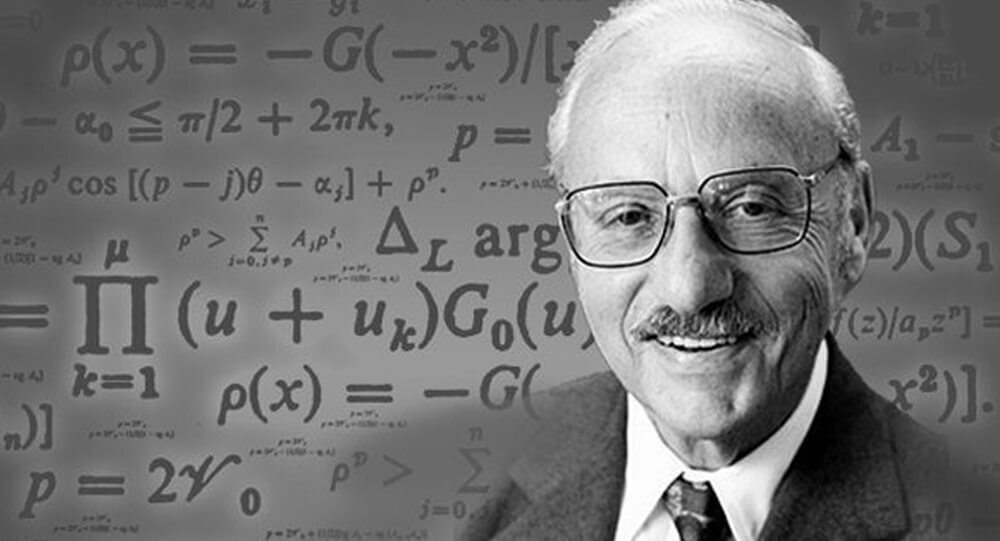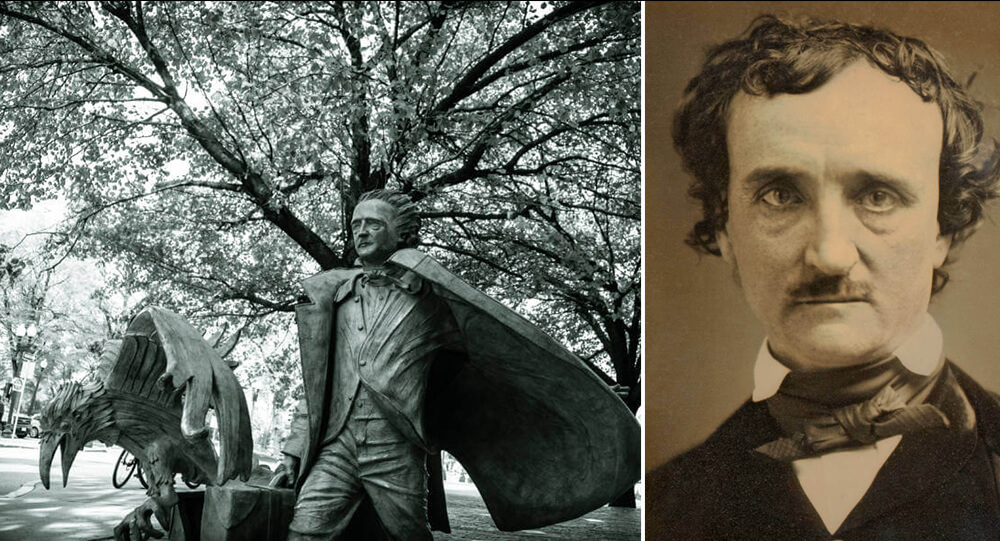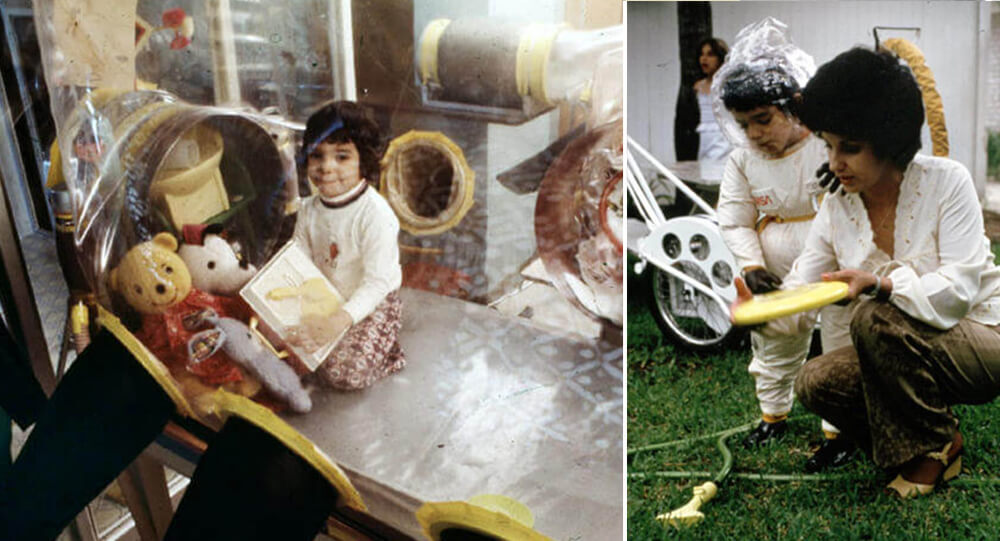

The touching story of David Vetter (bubble boy), the 'boy who lived in a bubble
How does it feel to be trapped in a bubble? For some, this implies living in isolation. However, David Vetter, a young Texas child, lived in the real world – though in a plastic bubble. David, dubbed “Bubble Boy,” was born in 1971 with severe combined immunodeficiency (SCID) and was forced to live his whole life in a specially manufactured sterile plastic bubble until he died at the age of 12.
David would have been in 50’s if he had lived. Thanks to therapy made possible in part by David’s own blood cells, children with SCID can now live normal lives. According to a recent report, 14 of the 16 children who had the experimental therapy nine years ago are now adults.
But how did “Bubble Boy” do in life? Continue scrolling to see David’s heartbreaking story, which was put together with the cooperation of Texas Children’s Hospital, Baylor College of Medicine, and the PBS documentary “The Boy in the Bubble.”

On September 21, David was born in Houston’s Texas Children’s Hospital. He was placed in a plastic isolator bubble after 20 seconds of being exposed to the outside world.
Related topic you might find interesting:
- Inspiring Story Of Jono Lancaster, Abandoned By His Mother At Birth For This ‘Defect’ On His Face
- The Story Of Lionel The Lion-Faced Man, Stephan Bibrowski
- The Heartbreaking Story Of Ella Harper, The ‘Camel Girl’
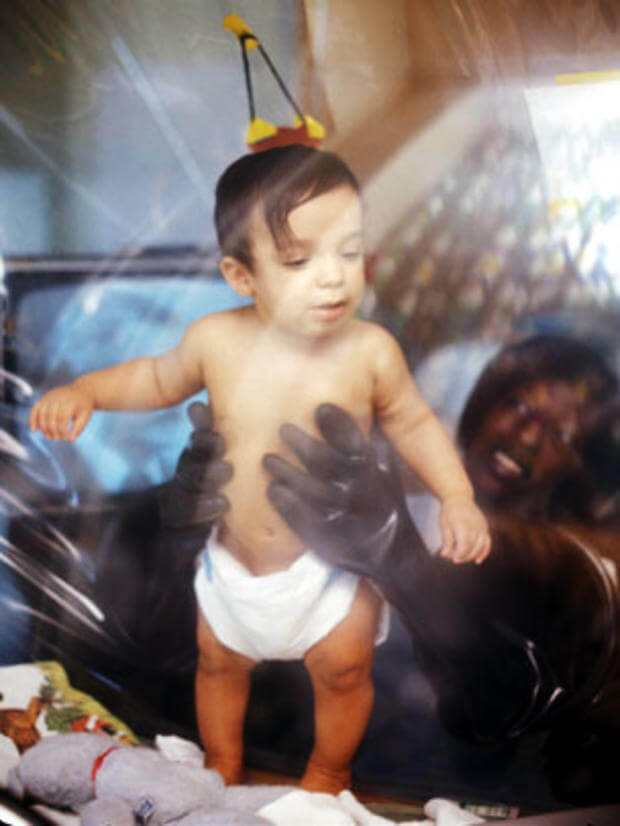
David was not the family’s first kid to be born with SCID. Carol Ann and David J. Vetter’s first son died of the condition when he was a baby.
Carol Ann was informed by physicians that if she had another boy, her son would have a one in two chance of being born with SCID, an illness that only affects boys. The Vetters turned down an offer to have their child aborted.
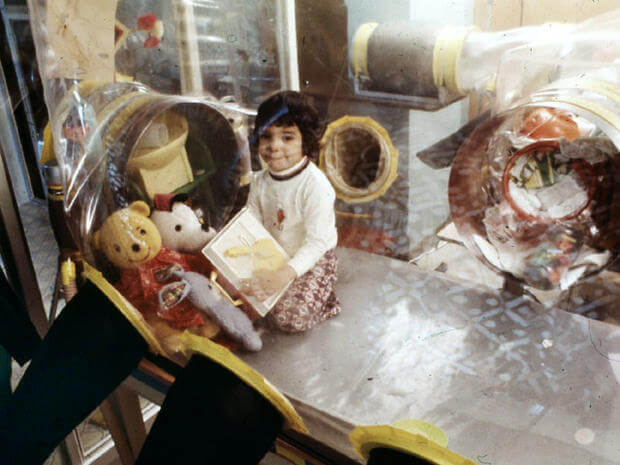
Doctors thought David would outgrow SCID by the age of two, but he spent the rest of his childhood in “bubbles,” NASA-designed isolator containment units.

Is raising a child in a bubble ethical? That’s what 30 Texas Children’s Hospital employees wondered – and eventually decided it was.
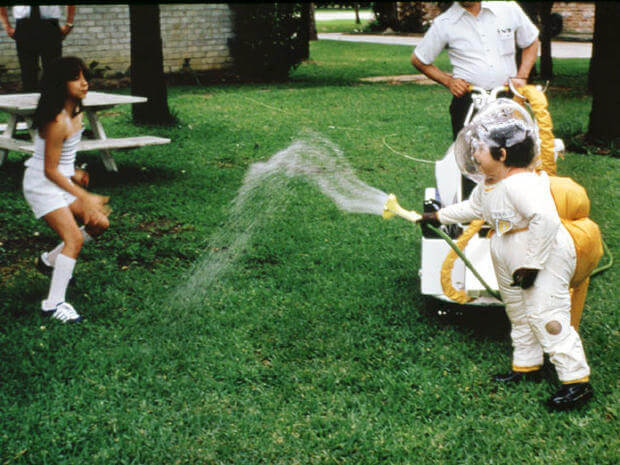
Thanks to NASA, David made his first steps outside the isolator bubble when he was six years old. For David, the space agency created a unique spacesuit that allowed him to walk and play outside.
David had to crawl down an insulated tunnel to get from the isolator to the spacesuit.

To keep David’s environment sanitary, workers had to conduct a 24-step pre-excursion hookup and a 28-step suit-donning procedure each time he used his suit.
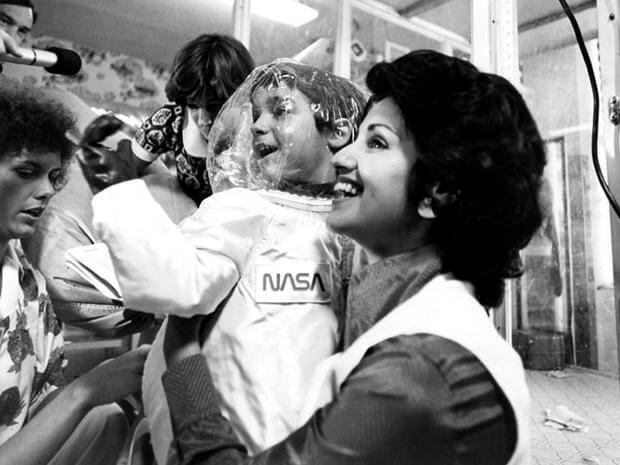
The complicated process of putting on the spacesuit was worth it for David and his mother, who was able to hold her son in her arms for the first time on July 29, 1977.

Dr. William Shearer, David’s personal physician, is shown in this 1979 photo during a visit. Dr. Shearer is now the director of Texas Children’s Hospital’s allergy and immunology clinic, where he treats children with SCID.
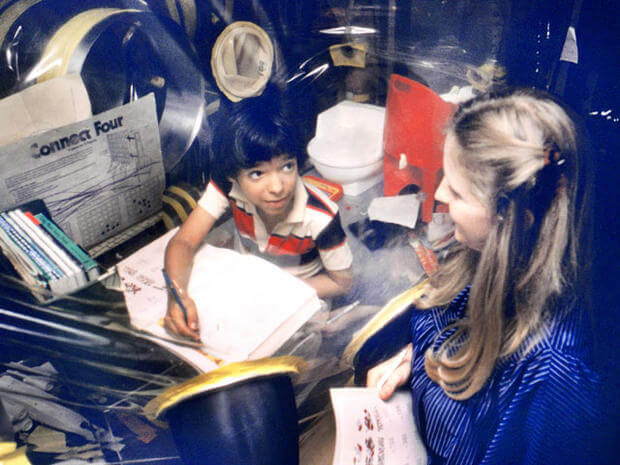
David received school lessons via his bubble and was able to keep up with the other children his age.

In September 1979, David posed for his annual portrait. Immunologists told him that a potential cure would take another ten years to develop.
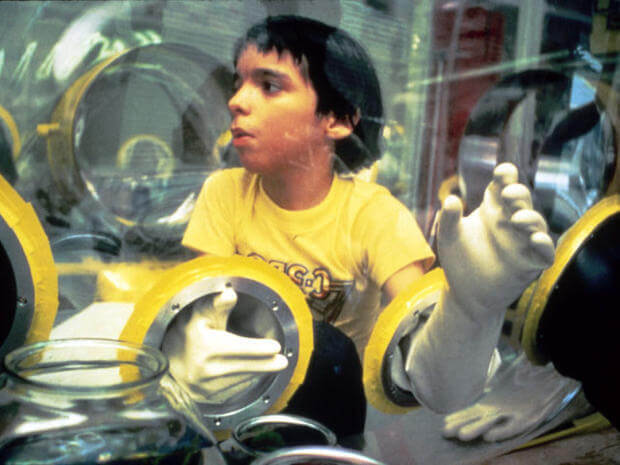
David’s annual photograph was shot in September 1980.
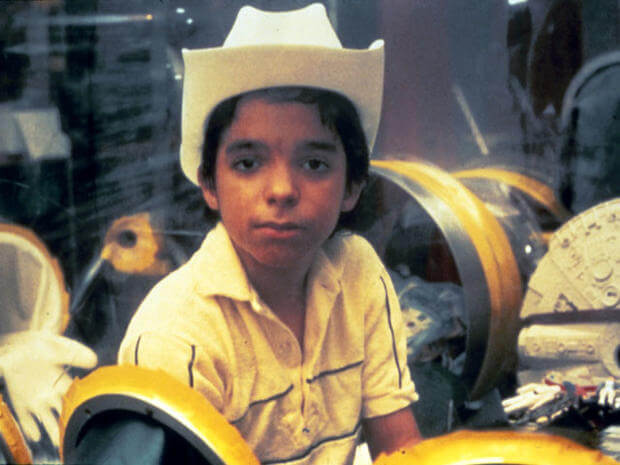
In September 1982, David posed for his annual portrait. At the age of 11, he became more thoughtful and requested to see the stars. On his birthday, his family took him outside to enjoy the sky for 20 minutes.

Bone marrow transplants from ideal donors were traditionally used to treat immune diseases. However, in 1983, the Vetters learnt about a new process that would allow bone marrow transplants from non-perfectly matched donors, and they agreed to give it a try. Katherine, David’s sister, contributed her bone marrow. Prior to the procedure, Dr. William Shearer speaks with David.
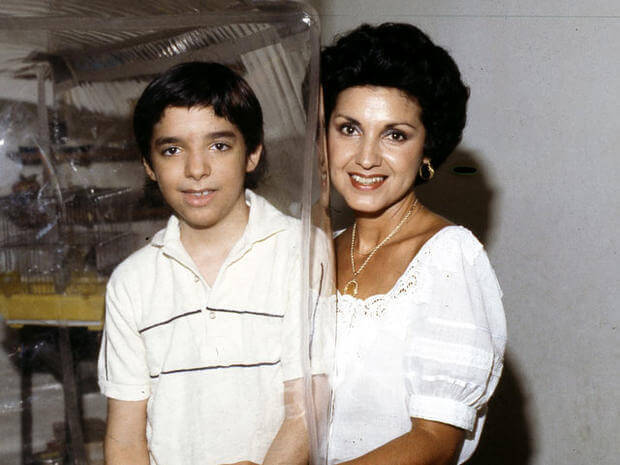
David died of lymphoma four months after getting the bone marrow transplant from his sister, a malignancy that was later revealed to have been brought into his system by the Epstein-Barr virus. Shortly after his death, the Texas Children’s Allergy and Immunology Clinic established the David Center, which is dedicated to immune deficiency research, diagnosis, and therapy.

Medals of Friendship: The Enduring Olympic Story of 1936
At the 1936 Summer Olympics, two Japanese pole vaulters named Sueo Oe and Shuhei Nishida tied for second, but they declined to compete against each other. As a result, Nishida was awarded the silver medal and Oe won a bronze medal. Upon returning to Japan, the athletes had their medals cut in half and spliced together to create new "friendship medals," which were half silver and half bronze.

The true story Of The Radium Girls that change US labor laws
Hundreds of young women worked in clock factories during World War I, painting watch dials with luminous radium paint. The company lied about the risk of radiation, claiming there was no danger, which resulted in the death of the young women.

Martin Couney, Saved Thousands of Premature Babies Wasn’t a Doctor at All
Martin Couney never qualified as a medical doctor. However, in the 1900s, he saved thousands of premature babies by exhibiting them in incubators at his Coney Island sideshow. Over the course of his career, he is said to have saved about 6,500 babies that had previously been written off by mainstream medicine.

Nordlingen, The Town Inside A Meteorite Crater With Millions Of Meteorite Diamonds
The German town of Nördlingen is embedded with 72,000 tons of microscopic diamonds. About 15 million years ago, a meteorite hit this region, and the impact created a massive depression and formed rocks containing diamonds, glass, and crystals. The town was built in the impact crater sometime around 898 CE.

The incredible story of a plane that lost its roof in mid-flight and the light signal that saved 94 lives.
On April 28, 1988, Aloha Airlines flight 243 was on the way to Honolulu from Hilo when a huge portion of the upper part of the fuselage blew off the airplane.

Louis Le Prince Invented the motion picture camera, and then he mysteriously disappeared
Louis Le Prince, the inventor of motion pictures, vanished without a trace in 1890. Thomas Edison quickly claimed the title of "first and sole inventor of cinema," even taking Le Prince's son to court to dispute it. A few years later, the son also dies under mysterious circumstances.

The day Iceland's women went on strike
Icelandic women went on strike for equal rights on October 24, 1975. 90% of women walked out of their jobs and homes, effectively shutting down the entire country. The men were struggling to keep up. The following year, Parliament passed a law requiring equal pay. Iceland elected the world's first female President five years later. Iceland now has the highest gender equality rate in the world.

Top 10 most cruel medical procedures that are being used today
We are all aware that medicine has advanced dramatically over the last fifty years. There are several modern medical approaches available today, but this was not always the case. However, the past of medicine is a dark one. Medical leeches, lobotomy, vascular surgery, cranial stenosis, and even electroshock therapy are all options. These are only a couple of the cruel healing techniques that are still in use today.

The story of Bill Haast, who lived to be 100 despite his extensive snake venom injections
Bill Haast immunized himself by injecting snake venom into his blood for several years. He holds the Guinness World Record for surviving the most lethal snake bites, having been bitten over 172 times. Bill became known as "Snake Man" around the world and lived for over 100 years.

History of Treadmill, punishment for prisoners
Treadmills were originally a punishment used to harness human power on a giant wheel used to grind grains, hence the name "treadmill." The History of Treadmill

Nuclear bomb accidentally dropped on North Carolina in 196
4 January 1961: The 4241st Strategic Wing's Boeing B-52G-95-BW Stratofortress, serial number 58-0187, was on a 24-hour airborne alert mission off the United States' Atlantic Coast.

The World’s First Seismograph: How Ancient China Detected Earthquakes 1,800 Years Ago
Over 1,800 years ago, long before modern technology, the ancient Chinese astronomer and inventor Zhang Heng created the world’s first seismograph in 132 AD. This ingenious bronze device could detect distant earthquakes by releasing small balls from dragons’ mouths into toads’ mouths—each indicating a different compass direction. Its historic detection of an earthquake 400 miles away astonished the imperial court and transformed the way societies understood and responded to seismic events.

Tunnels Dug by ancient giant sloths, A South American Megafauna
For years, scientists didn’t know what caused mysterious cave networks in South America. In 2010, they learned that the caves were actually tunnels dug by ancient giant sloths

How Dmitri Mendeleev Developed the periodic table of the elements
1850 Dmitri Mendeleev walked almost a thousand miles to Moscow so he could apply for the University of Moscow. Although he was not accepted, he walked to St. Petersburg where he was accepted, And with that education, he developed the the periodic table of the elements

Remembering the 1945 Empire State Building Disaster: When a Plane Met Skyscraper
An airplane crashed into the Empire State Building in 1945. Among other damage, plane parts severed the cables of an elevator and the woman inside fell over 70 stories. She lived and holds the world record for the longest survived elevator fall.

D.B. Cooper: Man who hijacked a plane and jumped out with a $200,000
On November 22, 1971, DB Cooper hijacked a Boeing 727, drank a whisky, smoked a fag, and then jumped out of the plane with $200,000. He was never again seen.

Max Headroom Incident: America’s Creepiest TV Hack
In 1987 a man hijacked a television station during an episode of Dr. Who and wore a Max Headroom mask and uttered nonsense, and he still hasn’t been caught

The 1976 April Fools' Pranks, Planetary Alignment
On April fool's Day, 1976, the BBC convinced many listeners that a special alignment of the planets would temporarily decrease gravity on Earth. Phone lines were flooded with callers who claimed they felt the effects.

June and Jennifer Gibbons The silent twin who Only Spoke to Each Other
Identical twins June and Jennifer Gibbons were born on 11 April 1963 at a military hospital in Aden, Yemen where their father worked as part of the Royal Air Force.

George Dantzig solved two famous “unsolved” problems in statistics mistakenly as assignment
In 1939, George Dantzig arrived late to his statistics class. On the board were two famous “unsolved” problems in statistics written as an example by his professor. Dantzig mistook the examples for homework assignments. He solved the “unsolved” problems and submitted the homework to his professor a few days later. His solutions earned him a doctorate.

Why the Word ‘Pen’ Comes from the Latin ‘Penna’ Meaning Feather
The humble word “pen” carries a rich history rooted in ancient times, derived from the Latin word penna, meaning “feather.” Long before modern pens revolutionized writing, feather quills—especially from geese—were the essential tools of scribes, scholars, and artists. This article journeys through the origins of the pen, its evolution, and fascinating trivia about the timeless connection between feathers and writing.

Poto And Cabengo: The Secret Language Of Twins
Poto and Cabengo, as the two girls called each other, communicated in their own language. The twins were ignored by their parents and secluded from the outside world because their father felt they were developmentally retarded, and their unique language evolved as a result of that neglect.

Top 10 Greatest and shocking Archaeological Discoveries of All Time
While we're all locked at home, there's no better way to escape to another time and place than to learn about amazing archeological sites and discoveries from around the world. Here are the 10 greatest and shocking archaeological discoveries —and don't be shocked if they inspire future trip plans whenever it's safe to do so again.

Will & William Wests: The puzzling situation of two inmates who are identical but not related
These are the mugshots of Will West and William West, and they are not related. They were both sent to Leavenworth Prison at the same time, in 1903, and after some confusion, the staff understood they had two different prisoners with the nearly same name, who looked exactly alike. They are part of the reason fingerprints are now used as identification.

Inside The Mysterious Death Of The Famed Gothic Writer Edgar Allan Poe
Hours before his death Edgar Allen Poe was found on the streets of Baltimore. He was incoherent, wearing another man’s clothes, and unable to explain how he got there. The cause of his death is an unsolved mystery.

